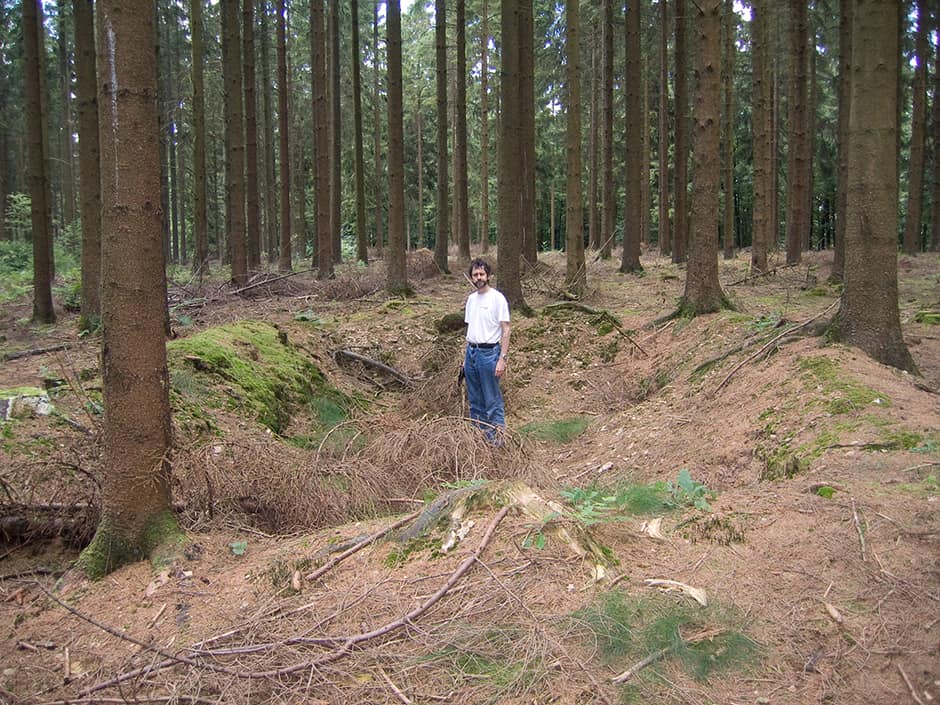UTM lecturer David Passmore recently led a geo-archaeological expedition to the battlegrounds of World War II. Passmore and his team covered the sites of battles that took place in northwestern Europe from June 1944 to February 1945.
It was believed that the archaeology of radar sites, bombing decoys, airfields, and factories in Britain had already been uncovered and studied. However, it soon became evident to Passmore’s team that the forests and woodlands of northwest Europe were unexplored. There has been little research conducted previously that pertains to the events of the time period.
In an attempt to offer more information about the history of the Second World War, Passmore and his team conducted a survey of the forest and woodland terrains of northwest Europe using archival documents, aerial photographs, and field visits, among other tools.
Passmore published his findings in the journal Antiquity in a paper titled “Second World War conflict archaeology in the forests of northwest Europe.” According to the paper, Passmore’s team was able to add to the current knowledge base of the geography of “munitions and fuel depots and their archaeological potential in woodlands” in northwest France at the time of the Normandy campaign (the invasion of Normandy by Western allied forces in 1944).
Passmore and his team also conducted studies on the forests that bordered Belgium, Germany, and Luxembourg, where large-scale combat operations are believed to have been held. The paper also notes that the surveying of this area can offer knowledge of not only the military history of specific combat events, but also allows analysis of field fortification practices to strengthen armies in preparation for battle, including the establishment of bomb shelters and trenches, as defined in their study.
When asked to describe the significance of his research, Passmore said in a LiveScience interview, “The logistics depots provide a picture of exactly where and how the Germans established their support network for armies before the allied invasion of Normandy, how they developed this network during the invasion and how the depots were overrun.”
Using the knowledge gained from the research, the team is now interested in understanding whether the allies knew of the fortifications, and, if so, what strategies they undertook to keep them out of German reach.
Passmore also emphasized the importance of preserving the archaeology of these battlegrounds, as they offer insight into the region’s rich history.


